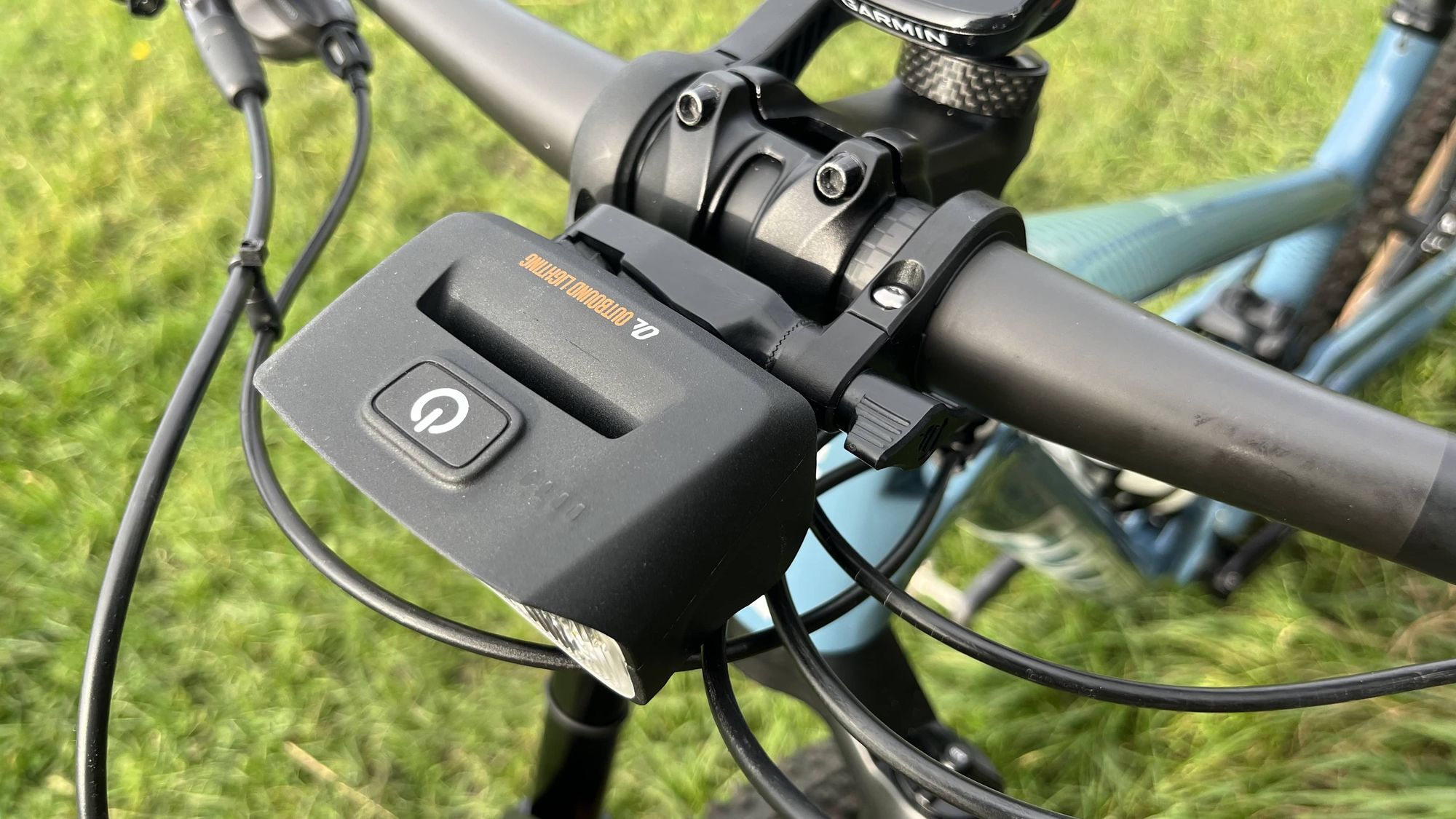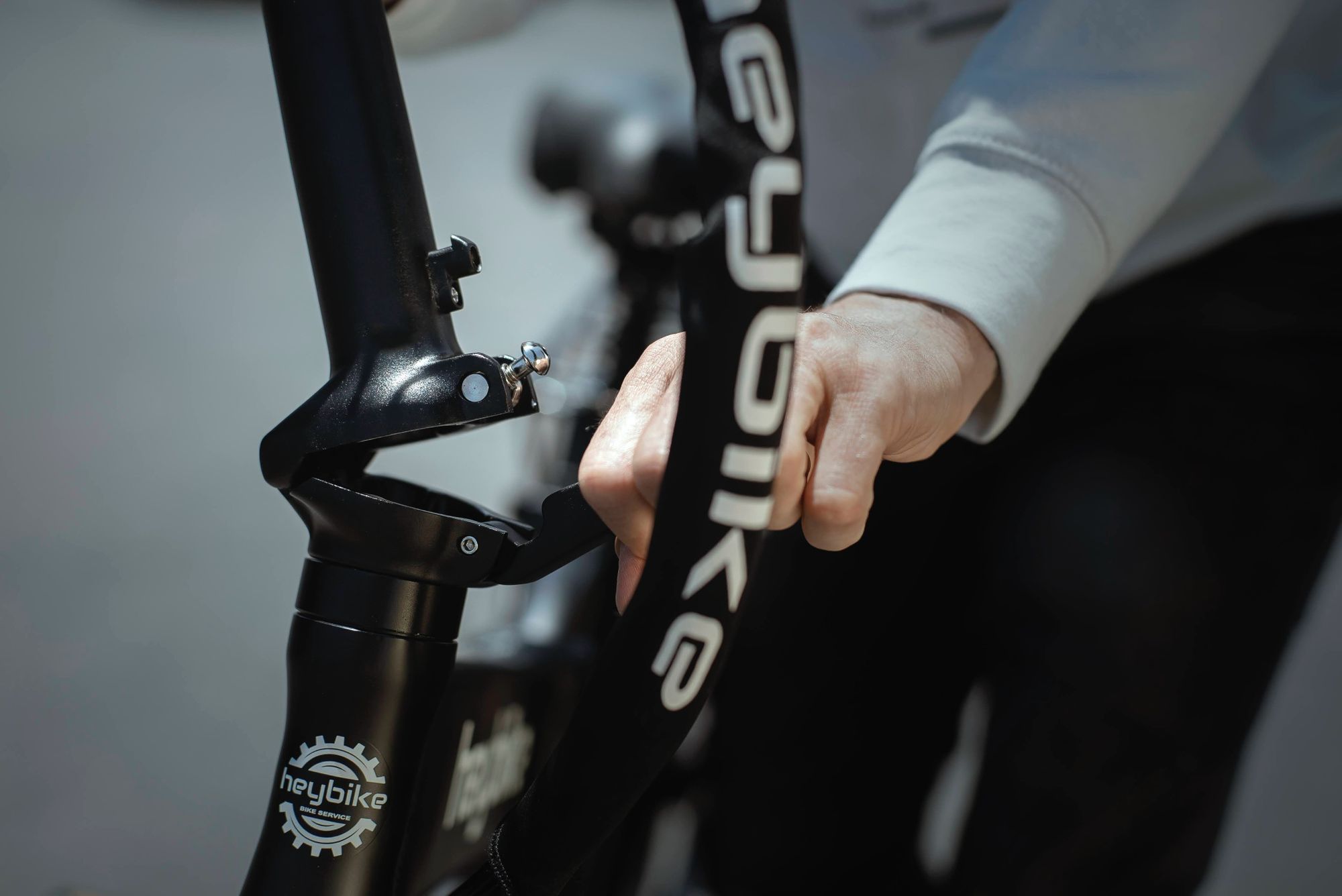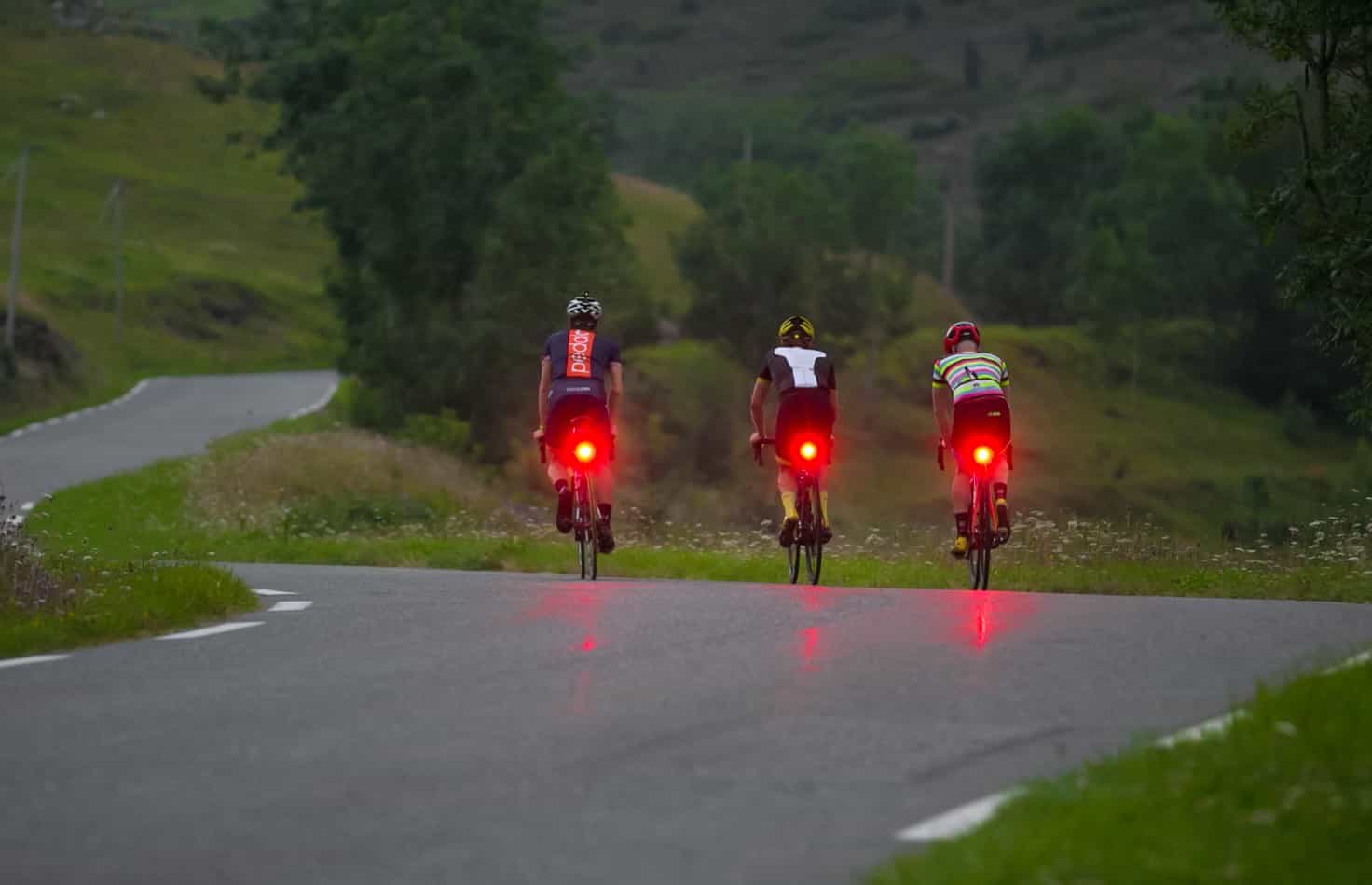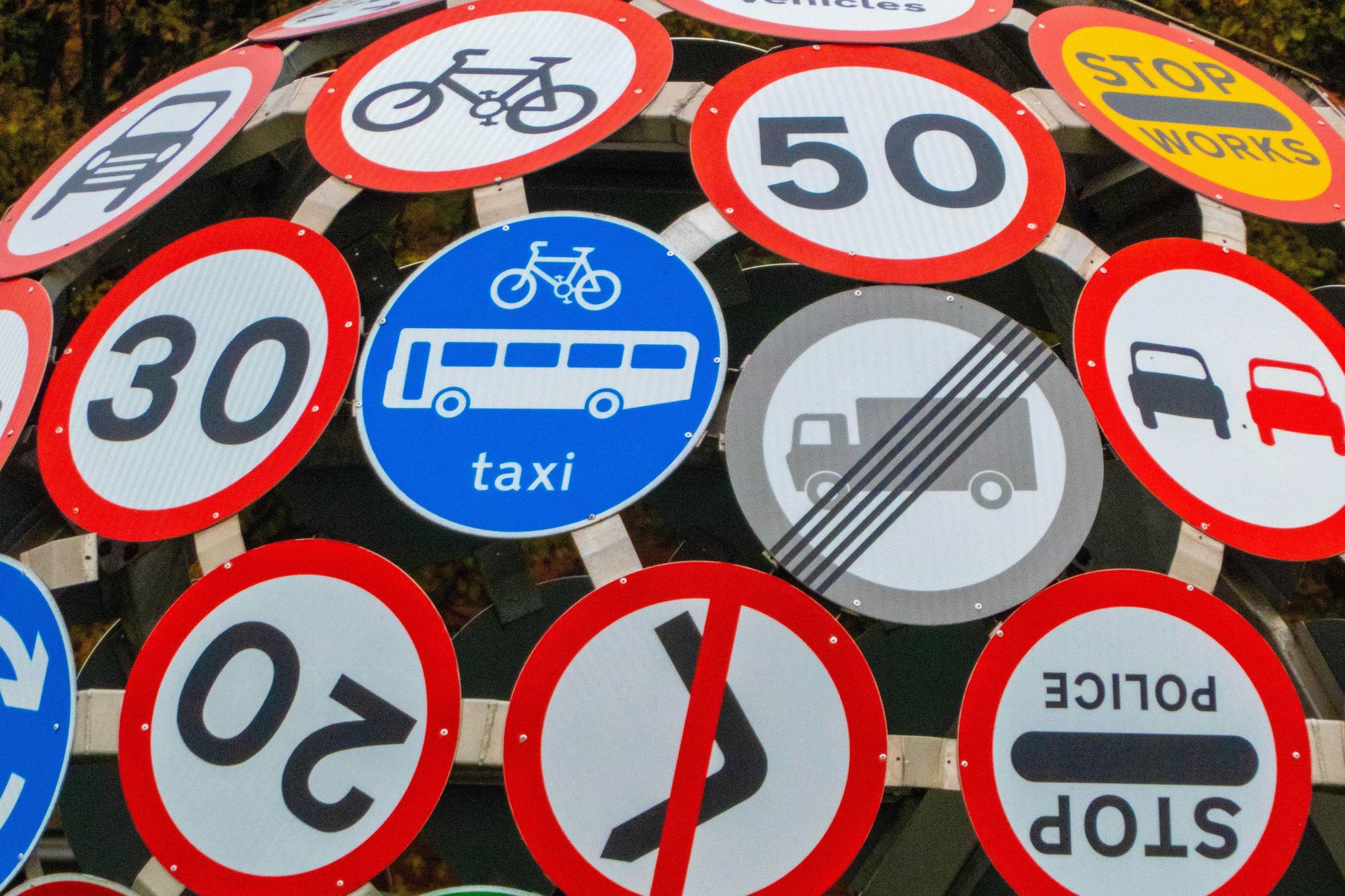This comprehensive guide will look into the world of bicycle lights, helping you understand the technology, features, and options available to enhance your cycling experience.
From lumens to mounting styles and from road to off-road lighting, we cover everything you need to know to help you make sure you get the setup you need.
What is a lumen?
The term lumens is the first thing you'll see when looking at lights. This unit measures the total amount of visible light emitted by a source and is critical in determining the brightness of your light. Modern cycling lights vary significantly in luminosity or lumen count, ranging from as little as 5 lumens to a staggering 5,000 or more. Typically, rear lights are less powerful than front lights, given their primary role in ensuring visibility rather than illuminating the path ahead.
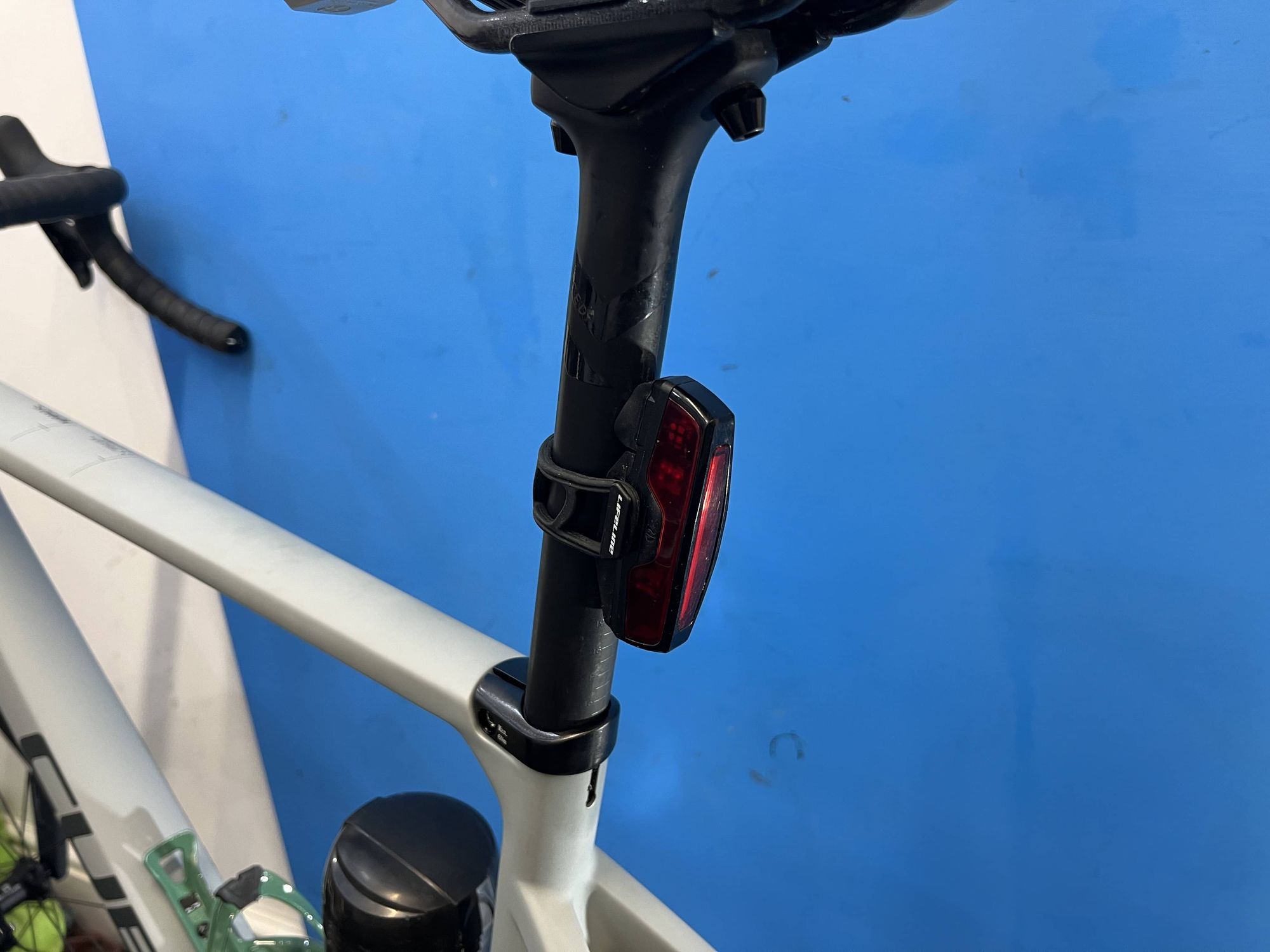
The Types of Bike Lights
Bicycle lights cater to different riders' needs and the conditions they are being used. Here's a breakdown of the main types you will find either online or in your friendly local bike shop.
Commuting Bike Lights
When choosing bike lights for urban riders in well-lit areas, the focus should shift slightly from illumination to visibility. In these settings, the main goal is to ensure that you are seen by other road users, particularly at junctions and roundabouts where side visibility becomes crucial. Here are some key considerations to consider when buying lights for commuting.
Emphasizing Visibility Over Illumination
In well-lit urban environments, the primary function of bike lights is to make sure you are visible to others rather than to light up the path. So, lights with high visibility features are more important than those with a high lumen output.
Safety Lights with Dual Modes
Opt for lights that offer both constant and flashing modes. A steady light helps other road users gauge your position and speed, while a flashing light attracts attention and increases your chances of being seen.
Importance of Side Visibility
Choose lights with features that enhance side visibility. This is particularly important at junctions and roundabouts, where drivers and pedestrians coming from the side may not have seen you. Lights with side illumination features can make a significant difference in these scenarios.
Compact and Efficient Design
A compact and low-profile light that is easy to attach/detach and doesn’t add much bulk to the bike works better for commuting, as it gives you plenty of handlebar space for things like bells, computers, and handlebar bags.
Additional Safety Features
Consider lights with extra safety features like integrated reflectors or smart technology that adjusts brightness based on ambient light conditions, as these can increase your visibility and the run time of your light batteries. Some can also run directly off your e-bike battery, so check to see if your bike supports a charging light.
Road Cycling Lights
For riders who often travel at higher speeds on unlit country roads, the requirements for bike lights are considerably different from those used in urban settings. Here, the emphasis is on powerful illumination with a higher lumen count to ensure a clear view of the road ahead and visibility to others. Here are the key features to consider:
High Lumen Output
A lumen output of 800 or more is essential for effectively illuminating unlit roads. This high brightness level is necessary to easily spot obstacles and scan road conditions and potential hazards at a distance, especially at high speeds.
Multiple Lighting Modes
Front lights with multiple modes are a bonus. A high-beam mode is handy for the darkest conditions or while descending, as it gives you a larger field of vision, while lower settings can be used when less light is required. This flexibility also helps in managing battery life during long rides. Side visibility is less of a concern, but many lights feature shaped lenses to give extra side illumination.
Battery Life and Charging Options
Given the longer duration and potentially remote nature of rides on unlit roads, a long battery life is crucial. Lights with a USB charging option can offer convenience, allowing for recharging via portable power banks if necessary. Some e-bikes have a USB connection, which enables you to power lights from the bike's battery, which can drastically increase run times.

Off-Road Bike Lights
For mountain biking and trail riding, the requirements for bike lights are specific to the challenges and conditions of off-road terrain. Here's what to look for in bike lights tailored for this purpose:
Powerful Broad-Beam Lights
A lumen count of 1000 or more is recommended for complete trail illumination. This high brightness level is essential to illuminate the varied terrain typical of mountain biking and gravel trails. Wide-beam lights help to light up a larger area, providing a better view of upcoming obstacles, turns, and changes in the trail.

Adjustability in Light Intensity
The ability to adjust light intensity is a significant advantage in trail riding. Different trail conditions – from open areas under moonlight to dense woods with no ambient light – require different illumination levels. Adjustable intensity not only caters to these varying conditions but also helps in managing battery life.
Helmet-Mounted Lights for Directional Illumination
In addition to handlebar-mounted lights, helmet-mounted lights can provide invaluable directional illumination. These lights follow the rider's gaze, offering visibility around corners and highlighting potential hazards that might not be directly in front of the bike.
Durability and Shock Resistance
Mountain biking involves exposure to rough conditions, including bumps, drops, and exposure to elements like mud and water. Therefore, lights need to be durable and shock-resistant to withstand these conditions.
Battery Life and Rechargeability
Long battery life is crucial; nothing is worse and potentially dangerous than your lights failing out in the woods at night. Lights with rechargeable batteries are a practical choice; carrying a spare battery or portable charger can be a wise precaution. Again, if you have an e-bike with a USB port, you can use through charging lights that run off your main battery so you can run your lights at full power for longer.
Secure Mounting Systems
The extra demands placed on your bike when riding off-road mean the mounting system needs to be secure and stable to ensure that the lights stay in place over rough terrain and during vigorous riding.

Purchasing Tips and Advice
When selecting bike lights, it's essential to consider the brightness and type of light and practical aspects like battery life, backup options, and user-friendly features. Here are some key points to keep in mind:
Battery Life Considerations
Adequate Running Time: Choose lights with a battery life that exceeds the duration of your typical ride. This ensures that your lights won’t run out of power mid-ride, which is crucial for both visibility and safety.
Plan According to Ride Length: For longer rides, prioritize lights with extended battery life or consider lights with power-saving modes that can extend run time when full brightness isn't necessary.
Carrying Spare Lights
Backup Lights: Always carry a backup light set. This is especially important for unexpected situations like a longer-than-planned ride or if your primary lights fail.
Portable and Lightweight Options: Backup lights should be portable and lightweight so they don't add much bulk or weight to your ride. Compact LED lights are often a good choice for this purpose.
User-Friendly Features To Look For
Battery Indicators- Lights with battery life indicators are beneficial. They indicate the remaining battery life, usually in a simple LED display, helping you decide whether to run in a power-saving lower-power mode, when to charge them, or when to switch to backup lights.
Easy Mounting Systems- Look for lights with mounting systems that are easy to use, secure, and compatible with your bike. Quick-release mounts are particularly convenient for riders who need to remove lights frequently.
Durable Construction Durable construction is essential, especially for riders who frequently cycle in rough conditions or inclement weather. Look for weather-resistant lights that can withstand the rigours of regular use. A poorly sealed lens or charging port can quickly spell the end for a light in wet weather.
In summary, when choosing bike lights, it's essential to consider the practicalities of your cycling habits. Ensure the lights have sufficient battery life for your needs, always carry a backup for emergencies, and look for features that make the lights convenient and reliable for your riding.
Conclusion
Bike lights have significantly advanced, transforming from basic tools for visibility into essential safety gadgets for cyclists. With the integration of cutting-edge LED technology and rechargeable batteries, bike lights today offer enhanced efficiency, durability, and adaptability. Whether navigating urban streets, embarking on long-distance rides, or traversing rugged off-road trails, modern bike lights are crucial for ensuring your safety and improving your overall cycling experience.
Factors such as lumens, battery life, mounting flexibility, and various light types are important considerations when selecting the ideal lighting solution for your biking adventures. Investing in high-quality bike lights is not merely about adhering to legal requirements; it's primarily about safeguarding your safety and that of fellow road users.
Learn about our fair, not fixed bike insurance
Discover what's covered and how much it costs to insure your bike with Laka by hitting the link below.

